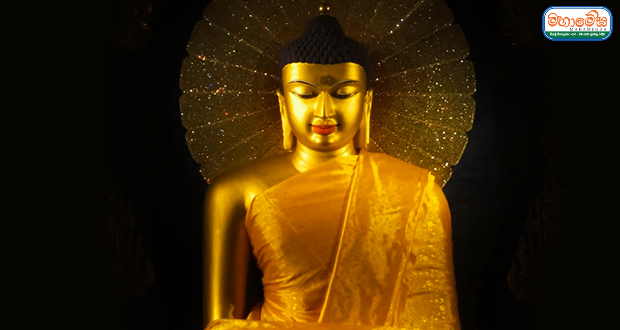Do you find yourself relentlessly pursuing perfection, or do you embrace life’s inherent imperfections with ease? It’s a universal pursuit, this quest for perfection, spanning across all walks of life. But pause for a moment – are we yearning for the right kind of perfection?
Over two and a half millennia ago, a young prince named Siddhartha, marked by fate to be a Universal Monarch, turned his back on a life of luxury. Clad in the humble robes of an ascetic, he embarked on a profound journey towards perfection, deeply moved by life’s inherent imperfections: the inevitability of aging, illness, death, and the manifold sufferings accompanying them.
Day by day, we witness the myriad imperfections of life, a constant reminder of our shared human condition. Yet, unlike Prince Siddhartha, we often remain blind to these profound truths. Instead, we chase after success, excellence, and a superficial sense of perfection, all the while harboring deep flaws within our very being. It was in stark contrast to this common plight that ascetic Siddhartha Gautama, after six relentless years of spiritual quest, attained the very perfection he had longed for. His enlightenment was a profound purification, a complete cleansing of his mind from all imperfections.
The roots of our imperfection lie in the defilements that reside within our minds. These defilements are the pollutants that taint our mental landscape. At any moment when our thoughts are clouded, it is typically due to the presence of greed, anger, or delusion. From these primary defilements spring forth a cascade of secondary ones, such as envy, jealousy, hypocrisy, conceit, arrogance, and vanity. When our minds are tainted by any of these impurities, our actions—whether physical, verbal, or mental—also lose their purity. Thus, whenever a person commits a wrongful act, speaks harsh words, or entertains harmful thoughts, it’s a reflection of these defilements at play. In stark contrast, one who has completely purged these polluting forces from their mind is known as an ‘Arahant’—a being of absolute perfection. The Supreme Buddha, through his own profound journey and without the need for external guidance, reached this pinnacle of enlightenment, becoming the first Arahant, the very embodiment of perfection.
Lord Buddha’s attainment of perfection was not merely a transient state; it was a profound transformation that permeated every aspect of his life for the 45 years following his enlightenment. His every action, thought, and word reflected this sublime state of being. Having irrevocably relinquished the bonds of greed, anger, and delusion, his mind remained forever untouched by the shadow of defilements. Yet, such unparalleled perfection did not shield him from the scrutiny and challenges of those less wise, who, perhaps unable to comprehend the depth of his enlightenment, sought to test him.
Just five weeks after his enlightenment, Lord Buddha faced a significant test of his newfound perfection, a challenge posed by the daughters of Mara, the very entity he had vanquished on his path to enlightenment. The daughters, Tanha, Arati, and Raga, witnessing their father’s distress, embarked on a mission to avenge his defeat. Their plan was to seduce Lord Buddha with their alluring charms. However, their efforts were in vain. The Supreme Buddha, having completely eradicated lust and thus becoming an Arahant, remained impervious to their temptations. Defeated and dejected, they returned to Mara, who greeted their failure not with sympathy but with biting sarcasm.
“Fools, did you think to drag a mountain with a lily stalk?, to dig a rock with finger nails?, to chew iron with your teeth?, did you seek a foothold in deep water with a mountain on your head? Did you part from Gothama, disappointed as if struck by a spike to your breast?”
It was clear that by then, Mara was humbled by the perfection achieved by the Blessed One.
Nobleman Anathapindika’s profound reverence was manifest in a magnificent gesture: he devoted fifty-four thousand gold sovereigns to the creation of the Jethavana monastery, a sanctuary for the Maha Sangha. This splendid abode was further graced with a unique offering for the Buddha—a seven-roof sandalwood kuti, a symbol of devotion and respect. However, the Blessed One’s stay in this kuti during the vas season was marked by his characteristic detachment. Like a swan gracefully departing a lake, he left the kuti without a trace of attachment. Whether beneath the shelter of trees, in the solitude of caves, or amidst the wilderness of thick forests, Lord Buddha found equal contentment. His indifference to his surroundings was a testament to his profound inner perfection, a state of being free from the clutches of greed.
Another remarkable aspect of the Blessed One’s perfection was his unwavering equanimity, free from even the slightest trace of anger, ill will, hatred, or hostility. This attribute was vividly demonstrated in an encounter with a Brahmin named Akkosaka Bharadvaja. The Brahmin, consumed by fury, hurled rude and harsh words at the Blessed One. Yet, Lord Buddha, entirely unmoved by this outburst, responded with calm advice. Misinterpreting this serene response as anger, the Brahmin remarked, ‘King and the general public believe Master Gotama to be an Arahant, but it seems Master Gotama is prone to anger.’ To this, the Blessed One offered a profound reply: ‘For a person who is tamed, living a righteous life, liberated from suffering through realization, calm and composed; how can there be anger?’
Through this interaction, the Buddha not only demonstrated his own mastery over anger but also imparted this crucial teaching to his disciples. He emphasized the importance of this principle with a powerful analogy, saying, ‘Even if bandits were to sever your limbs with a two-handed saw, if your mind is tainted with anger, then you are not truly practicing my teachings.’ This stark admonition serves as a timeless reminder of the profound impact of relinquishing anger on the path to spiritual perfection.
Furthermore, the Blessed One’s profound wisdom rendered him impervious to deception, for he had thoroughly eradicated the shadow of delusion. This unassailable clarity was evident in his encounters with Mara, who persistently sought to mislead him. On one such occasion, Mara, with cunning intent, approached the Buddha and recited a verse designed to deceive him: ‘I shall trap you with the snare that originates from the mind and moves about the sky. Thus, ascetic, you shall not escape from me.’ This verse, laden with deceit, was a testament to Mara’s determination to bewilder the Enlightened One.
However, the Buddha’s response illuminated the futility of Mara’s attempts, as he replied with unshakable clarity, a mind free from any hint of delusion: ‘I have relinquished the desire for sensual pleasures of forms, sounds, odors, tastes, and tangibles that overwhelm the mind. Mara, in this respect, I have defeated you.’ This exchange starkly contrasts the potential vulnerability of an ordinary person, who lacks the Buddha’s unwavering discernment, to Mara’s deceptions. Where many might have faltered, entangled in Mara’s web of illusion, the Buddha stood unyielding, his enlightenment a beacon of unassailable truth.
Lord Buddha’s mind was a haven of tranquility, a sharp distinction to the tumultuous whirl of thoughts and emotions that often characterize our mental state. In a moment of rare disclosure, the Blessed One shared insights into the serene workings of his mind with his disciples. He revealed, ‘Bhikkus, there are two thoughts that frequent my mind: the thought of being unassailable and the thought of being in a state of deep relaxation and isolation. Thus, as I dwell with a mind imbued in loving kindness and non-harm, there occurs in me the recurring thought that ‘may I not harm anyone, whether they are fearful or fearless, with my actions.’ Moreover, as I immerse myself in deep relaxation and isolation, I am often struck by the realization: If there were any defilements within me, they are now all eradicated’
This profound statement offers a glimpse into the exalted state of consciousness achieved by Lord Buddha. It eloquently illustrates the depth of his enlightenment, a mind utterly free from the taints of greed, anger, and delusion, and underscores his unique standing as a spiritual leader whose inner peace and perfection were unparalleled.
In the ‘Nibbana Sutta’, Lord Buddha unveils a profound vision of Nibbana, presenting it as the ultimate resolution to all our imperfections. He describes this exalted state with transcendent clarity: ‘Bhikkus, there exists a realm known as Nibbana, where none of the earthly elements – earth, water, fire, nor wind – hold sway. It is beyond the infinite realms of space, consciousness, nothingness, and neither perception nor non-perception; transcending this world and the next, untouched by the sun or the moon. Here, there is no coming or going, no staying, no decay, nor birth: it is an unestablished, unconditioned realm, beyond the bounds of mental conception. This, Bhikkus, is the cessation of suffering.’
This insightful teaching illuminates the path we should aspire to follow – a journey towards achieving Nibbana, walking in the footsteps of our great teacher, the Supreme Buddha. In his teachings and his being, he embodies the very essence of perfection, guiding us towards a state of ultimate liberation and peace.
By a Venerable Monk of the Mahamevnawa Buddhist Monastery













Recent Comments